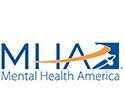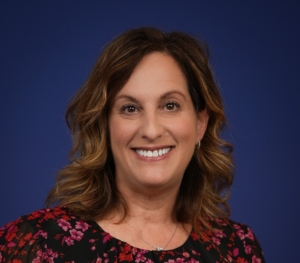Improving Suicide Care in Health & Behavioral Health Systems
Suicide is a leading cause of death in the United States and a major public health concern. Research has shown that identifying and helping people at risk for suicide during regular care visits can help prevent it. Primary care clinics are particularly important in this regard, as research has shown that over 40% of people who died by suicide were seen in this setting in the months before their death.
A recent study funded by the National Institute of Mental Health (NIMH) found that when primary care clinics added suicide care practices to routine visits, suicide attempts dropped by 25% in the three months after the visit. The findings highlight how impactful it can be for primary care clinics to take an active role in preventing suicide and for health systems to integrate suicide care practices into clinical care.
Unfortunately, health care does not always systematically attend to suicide prevention. Patients are not routinely or systematically screened, protocols and expectations for any kind of care that directly targets suicidal thoughts and behaviors are absent, and evidence-based practices are used inconsistently, if at all.
A core belief within the Zero Suicide model is that suicide deaths for individuals under the care of health and behavioral health systems are preventable. Since 2012, this framework has been proposed as a quality improvement and patient safety model that transforms system-wide suicide prevention and care to save lives.
“It doesn’t matter which health care system ‘door’ a patient enters, any door should be the right door where someone can be identified as at risk of suicide and receive swift, meaningful, evidence-based interventions to reduce their risk,” said Julie Goldstein Grumet, PhD, Vice President of Suicide Prevention Strategy at Education Development Center.
Removing the Burden from Patients
Dr. Goldstein Grumet noted that one of the biggest challenges in suicide prevention and care is the misconception that a person thinking about suicide will proactively tell their health care provider or will automatically divulge their suicidal thoughts if asked how they are doing.
“It can be tremendously difficult for someone considering suicide to bring it up,” she said. “They might not know what will happen if they say something. They may have been dismissed, judged, or criticized by others when they’ve said something in the past. Or they may have been traumatized by previous healthcare experiences. That is why it is important to remove the burden of notification from the patient.”
The Zero Suicide model instead calls for providers to directly screen patients for suicide using an evidence-based screening tool – in an empathetic and straightforward manner – if they are having thoughts of suicide. This framing neutralizes the idea that discussions around suicide are uncomfortable and makes the conversations a normal part of every patient visit.
“Asking directly about suicide and responding appropriately should be as routine as having blood pressure, height and weight checked at every health care visit, with providers feeling comfortable and prepared to do so” Dr. Goldstein Grumet said. “These discussions certainly should take place in every behavioral health visit, but should also happen in primary care, OB/GYN, oncology, neurology, and every specialty visit.”
Comprehensive Approach to Suicide Prevention
Zero Suicide is several things: an aspirational goal designed to catalyze transformational change, a suicide care model with specific practices for health systems to employ, and a movement seeking to make health care settings safer and more compassionate for people with suicidal thoughts.
It represents a culture shift from fragmented suicide care toward a holistic and comprehensive approach to quality improvement and patient safety, and to the safety and support of staff, who do the demanding work of caring for suicidal individuals. Over a thousand health care systems across the U.S. and the globe have implemented Zero Suicide.
The comprehensive Zero Suicide approach is the first U.S. program linked to a substantial decrease in suicides among behavioral health patients. An NIMH-funded study found that Zero Suicide intervention delivered at 22 primary clinics over a two-year period resulted in a 25% decrease in suicide attempts in the 90 days after the visit.
Zero Suicide is comprised of seven elements:
- Lead system-wide culture change committed to reducing suicides.
- Train a competent, confident, and caring workforce.
- Identify individuals with suicide risk via comprehensive screening and assessment.
- Engage all individuals at risk of suicide using a suicide care management plan.
- Treat suicidal thoughts and behaviors directly using evidence-based treatments.
- Transition individuals through care with warm hand-offs and supportive contacts.
- Improve policies and procedures through continuous quality improvement.
“Zero Suicide embeds lived experience in everything we do,” Dr. Goldstein Grumet said. “People who have survived thoughts or attempts of suicide, and their loved ones, are incredibly knowledgeable about what works and why.”
Identifying the Appropriate Level of Intervention
Zero Suicide stresses the training, accountability, and support health care providers need to make sure they’re comfortable and confident talking about suicide and are trained to competently deliver the right level of evidence-based interventions to take care of patients at risk. It includes checks and balances to make sure these practices are happening at every patient visit, across the entire system. It also includes making good transitions to other providers and then following up to make sure the individual can navigate the system and actually accesses the referral provided.
According to Dr. Goldstein Grumet, the “right level” of intervention may require emergency department hospitalization for the highest and most acute risks, but not always. Most people don’t require an acute level of care. Instead, they may immediately benefit from brief interventions to reduce that acute risk. This may include a meaningful and personalized safety plan – a set of strategies they can use to reduce their risk when flooded with thoughts of suicide and counseling about how to remove access to lethal means during this phase of the crisis.
“A personalized safety plan will include how to identify triggers, coping strategies, and people in their network that can help distract them from suicidal thoughts. It will be very individualized for each person,” she said. “It will also include plans to remove access to lethal means, so for example, locking up their gun or giving it to someone who will keep it safe, much like how someone would give their car keys to a designated driver if they have been drinking. So it isn’t forever, but it keeps them safe during the crisis. In a Zero Suicide framework, practices are designed to fill gaps that often occur – instead of just asking a patient to lock up their gun, the health system will also actively reach out to the individual’s family and discuss why gun removal is important and how to do it and then follow up to make sure it’s done.”
Zero Suicide Tools Available to Health Systems
To help health systems better understand and implement a Zero Suicide program, EDC created a Zero Suicide Toolkit as a detailed guide to the program’s seven elements. Adaptations of the Toolkit are available for Indian Country and children’s hospitals.
EDC also offers a wealth of additional resources to health systems interested in starting a Zero Suicide initiative and to those that are actively doing the work of Zero Suicide.
- Getting Started with Zero Suicide: 10 steps for those at the beginning of their journey.
- Insights and Stories: To help health systems cultivate their Zero Suicide implementation.
- Video Series: Designed to help health systems motivate their workforce in support of Zero Suicide.
- Zero Suicide Listserv: Connecting a network of executives, providers, researchers, and advocates.
- Parent Resources: For providers to share with families following their child’s suicide attempt.
In addition, the Zero Suicide Institute® at EDC guides organizations and professionals through transformational change toward safer suicide care. It provides expert training, consultation, and products to elevate the quality of care and patient safety.
Resources
Primary Care Can Play Key Role in Suicide Prevention, National Institute of Mental Health
National Strategy for Suicide Prevention, National Action Alliance
Editor’s Note: Are you or a loved one living with a behavioral health condition and need assistance affording your treatments? The HealthWell Foundation offers a range of financial assistance funds that may help. For more information and to determine eligibility visit healthwellfoundation.org/disease-funds/
***If you or someone you know needs immediate help, please call 988 or visit https://988lifeline.org for the Suicide and Crisis Lifeline.***



















